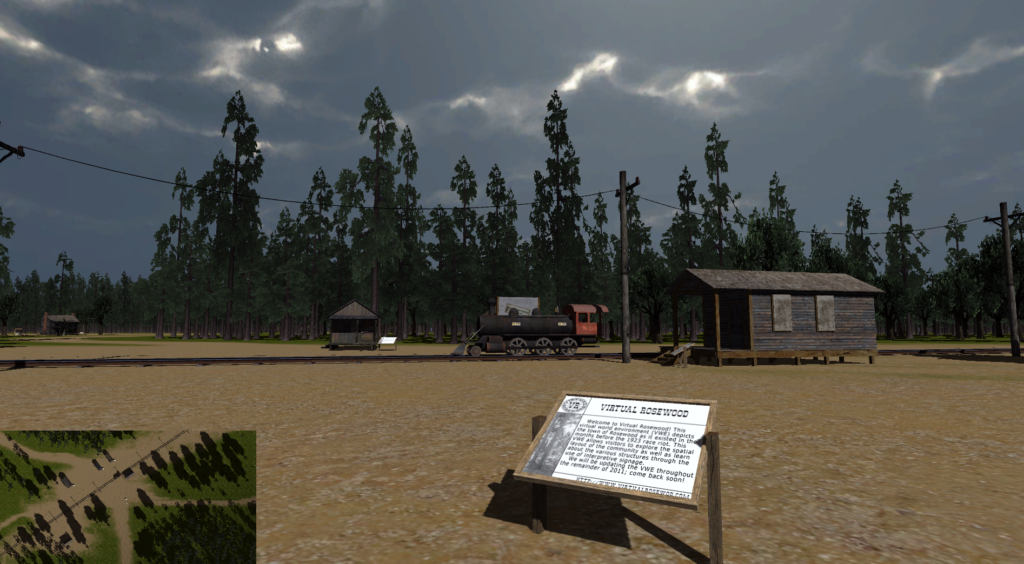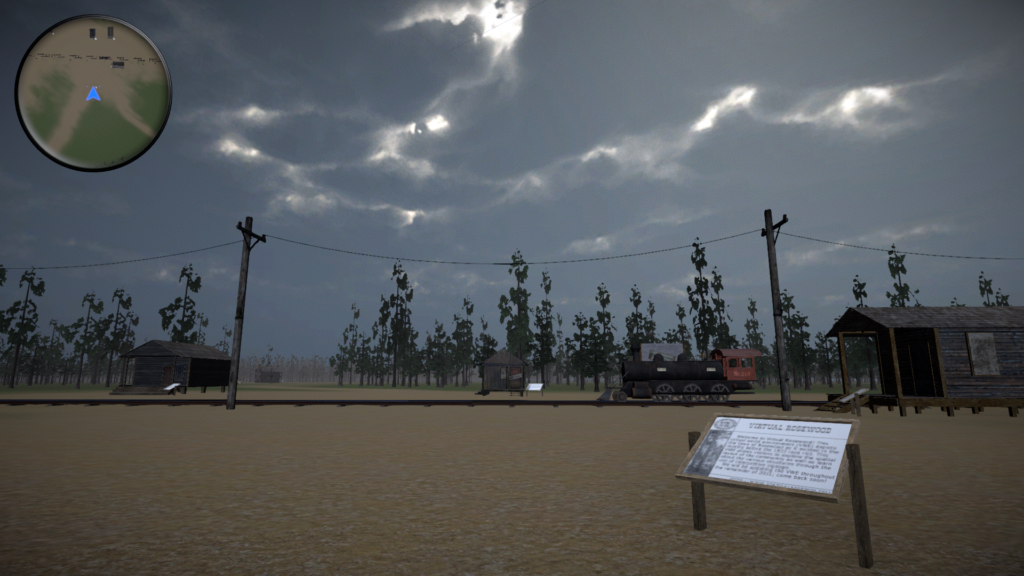The original Virtual Rosewood was constructed using several programs. The open source 3D program Blender was used to model the structures and the Unity 3D game engine used to produce the virtual world. The layout of the community is based upon the spatial template created by mapping historic property ownership. The original version required roughly 600 hours to complete. This does not include the several months in late 2009 and early 2010 spent researching and mapping historic properties.
Changes in web technologies meant the original version no longer ran in most modern web browsers. Thanks to an update by Diana Gonzalez-Tennant of Digital-Heritage Interactive, LLC a Virtual Rosewood 2.0 was created in 2021, ten years after the original! You can access it here. It is ~100mb in size and may take a couple of minutes to download into your browser (depending on internet speed).
If the browser version does not load properly or work, you can also download the updated Virtual Rosewood 2.0 by clicking here. Save it to your local hard drive, extract/unzip the folder to your local computer, and click on the “Virtual Rosewood.exe” file. You can exit the simulation by pressing Esc. The image below explains how to move within the virtual world, which is the same for both versions.


